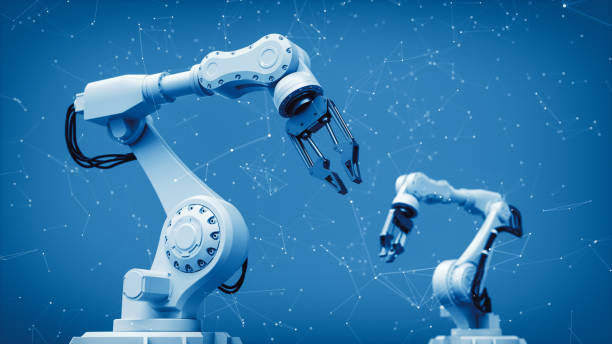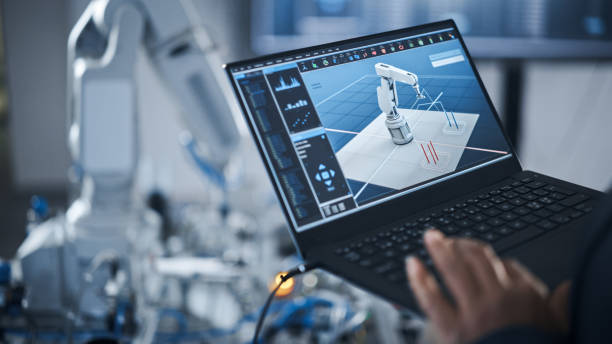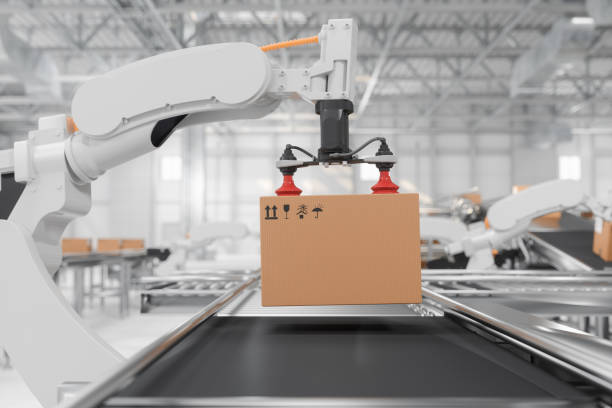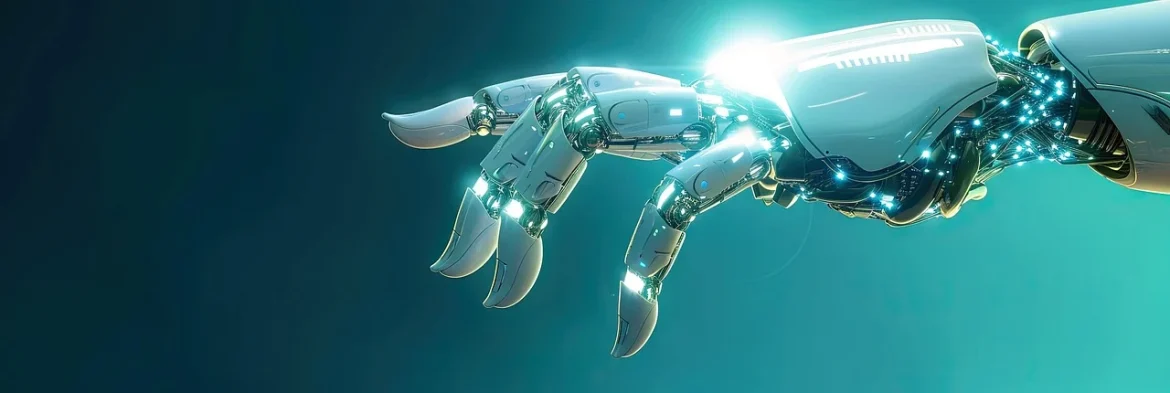Robotics and automation are at the forefront of technological advancement, revolutionizing industries and reshaping everyday life. These technologies, driven by innovations in artificial intelligence (AI), machine learning, and engineering, are enhancing productivity, efficiency, and safety across various sectors. This article explores the core concepts of robotics and automation, their applications, benefits, challenges, and future trends.

Understanding Robotics and Automation
Robotics is the field of engineering and technology focused on the design, construction, and operation of robots. Robots are programmable machines that can perform tasks autonomously or semi-autonomously. Automation refers to the use of technology to perform tasks with minimal human intervention. It encompasses a range of technologies, including robotics, to streamline processes and increase efficiency.
Key components of robotics and automation include:
- Sensors: Sensors collect data from the environment, such as proximity, temperature, or pressure, and provide input for robots and automated systems to make informed decisions.
- Actuators: Actuators are devices that enable robots to perform physical actions, such as moving arms, rotating joints, or gripping objects. They convert electrical signals into mechanical movement.
- Control Systems: Control systems manage the operations of robots and automated systems. They use algorithms and software to process data from sensors and guide the actions of actuators.
- Artificial Intelligence (AI): AI enables robots and automated systems to learn from data, make decisions, and adapt to changing conditions. Machine learning algorithms and neural networks are commonly used to enhance the capabilities of robots.
- Programming and Software: Robots are programmed using specialized software to perform specific tasks. This programming can be done using graphical interfaces or coding languages, depending on the complexity of the tasks.
Applications of Robotics and Automation
- Manufacturing:
- Assembly Line Automation: Robotics is widely used in manufacturing to automate repetitive tasks, such as assembling components, welding, and painting. Automated assembly lines improve production speed, consistency, and quality.
- Quality Control: Robots equipped with sensors and vision systems can inspect products for defects, ensuring high-quality standards and reducing the need for manual inspection.
- Healthcare:
- Surgical Robots: Surgical robots assist surgeons in performing precise and minimally invasive procedures. These robots provide enhanced dexterity and precision, leading to improved patient outcomes and shorter recovery times.
- Assistive Robots: Assistive robots support individuals with disabilities or elderly individuals by providing assistance with daily activities, such as mobility, communication, and personal care.
- Logistics and Warehousing:
- Automated Guided Vehicles (AGVs): AGVs transport materials and goods within warehouses and distribution centers. They navigate autonomously using sensors and predefined paths, improving efficiency and reducing manual labor.
- Robotic Picking Systems: Robotic systems equipped with vision and grasping technologies can pick and sort items in warehouses, optimizing inventory management and order fulfillment.
- Agriculture:
- Precision Farming: Robotics and automation are used in precision farming to monitor and manage crops. Autonomous tractors, drones, and harvesters enhance planting, irrigation, and harvesting processes, leading to increased productivity and sustainability.
- Robotic Weeding: Robotic systems equipped with sensors can identify and remove weeds from fields, reducing the need for manual labor and minimizing the use of chemical herbicides.
- Service Industry:
- Customer Service Robots: Robots are used in customer service roles, such as receptionists, concierge, and information assistants. They provide information, guide visitors, and perform routine tasks, enhancing customer experiences.
- Hospitality Robots: In the hospitality industry, robots are used for tasks such as room service delivery, cleaning, and check-in/check-out processes, improving efficiency and guest satisfaction.

Benefits of Robotics and Automation
- Increased Efficiency:
- Productivity Gains: Automation increases productivity by performing tasks faster and more accurately than humans. This leads to higher output and reduced production times.
- Cost Savings: By reducing the need for manual labor and minimizing errors, automation lowers operational costs and improves profitability.
- Enhanced Safety:
- Risk Reduction: Robots and automated systems can perform hazardous tasks, such as working in dangerous environments or handling toxic substances, reducing the risk of injuries and accidents.
- Consistency: Automated systems provide consistent and reliable performance, reducing the likelihood of errors and improving overall safety.
- Improved Quality:
- Precision and Accuracy: Robots and automation technologies deliver high precision and accuracy in tasks, resulting in consistent product quality and reduced defects.
- Enhanced Monitoring: Automated systems can monitor processes in real-time, allowing for immediate detection and correction of quality issues.
- Greater Flexibility:
- Adaptability: Modern robots and automated systems can be reprogrammed or reconfigured to handle different tasks or adapt to changing production requirements, providing flexibility in manufacturing and other industries.
- Scalability: Automation allows for easy scalability, enabling businesses to increase production capacity without a proportional increase in labor costs.
- Enhanced Productivity:
- 24/7 Operation: Robots and automated systems can operate continuously without breaks or fatigue, increasing overall productivity and maximizing output.
- Rapid Response: Automation systems can quickly respond to changing conditions or demands, improving efficiency and reducing downtime.
Challenges and Considerations
- Technical Complexity:
- Integration: Integrating robotics and automation systems into existing processes can be complex and require significant modifications to infrastructure and workflows.
- Maintenance and Support: Automated systems require regular maintenance and support to ensure optimal performance and prevent breakdowns.
- Cost and Investment:
- Initial Investment: The upfront cost of purchasing and implementing robotics and automation systems can be substantial, which may be a barrier for some businesses.
- Return on Investment (ROI): Businesses must carefully evaluate the potential ROI of automation projects to justify the investment and ensure long-term benefits.
- Workforce Impact:
- Job Displacement: The adoption of robotics and automation may lead to job displacement for workers performing manual or repetitive tasks. Addressing the impact on employment and providing retraining opportunities is essential.
- Skill Requirements: The implementation of robotics and automation requires a skilled workforce to operate, program, and maintain the systems. Training and education are necessary to develop the required expertise.
- Ethical and Social Implications:
- Decision-Making: Ethical considerations arise in scenarios where robots make decisions that affect human lives, such as in healthcare or autonomous vehicles. Addressing these ethical dilemmas is important for responsible development and deployment.
- Privacy Concerns: Automation systems that collect and analyze data may raise privacy concerns, particularly in sectors such as healthcare and surveillance. Ensuring data security and privacy is crucial.

Future Trends in Robotics and Automation
- Advancements in AI and Machine Learning: Continued advancements in AI and machine learning will enhance the capabilities of robots and automated systems, enabling them to perform more complex tasks and make better decisions.
- Collaborative Robots (Cobots): Collaborative robots, or cobots, are designed to work alongside human workers, complementing their skills and enhancing productivity. The development of safer and more intuitive cobots will drive their adoption in various industries.
- Autonomous Systems: The development of autonomous systems, such as self-driving vehicles and drones, will further expand the applications of robotics and automation, transforming transportation, logistics, and delivery services.
- Human-Robot Interaction: Improving human-robot interaction will be key to the successful integration of robots into everyday life and work environments. Advances in natural language processing, gesture recognition, and user interfaces will enhance the usability and acceptance of robotic systems.
- Sustainable Robotics: The focus on sustainability will drive the development of eco-friendly robotics and automation solutions. This includes energy-efficient systems, recyclable materials, and technologies that reduce environmental impact.
Conclusion
Robotics and automation are driving transformative changes across industries, enhancing efficiency, safety, and productivity. While challenges such as technical complexity, cost, and workforce impact remain, ongoing advancements and innovations will continue to shape the future of these technologies. As robotics and automation become more integrated into our daily lives and business operations, they will play a pivotal role in shaping the future of work, industry, and society.

